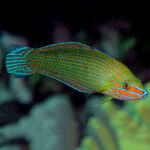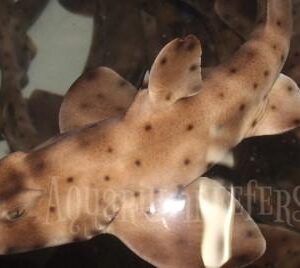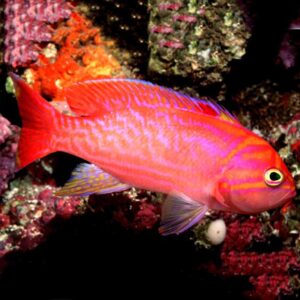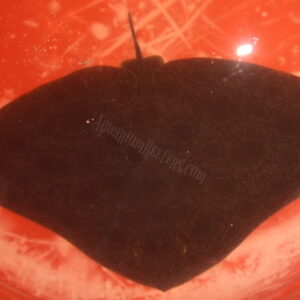Description
Rose Band Fairy Wrasse, Cirrhilabrus roseafascia, also go by the name Pink Banded Fairy Wrasse or Red Shimmering Dwarf Parrot.
These majestic fish make great additions to a marine aquarium. Males have gorgeous pink and orange bodies, brilliantly offset by their pale purple bellies. A deep red stripe covers their back and extends from nose to diamond shaped tail. They have large, bright yellow fins that feature dark blue and purple edging. Females have hot pink bodies and soft yellow fins in comparison.
Rose Band Fairy Wrasse, Cirrhilabrus roseafascia, Ecology:
These beautiful fish are found in the Passes de Bulari, New Caledonia, situated in the Pacific Ocean.
The complex habitat help the wrasse avoid predation. Unlike some species, these fish do not bury themselves to sleep or hide. Instead, they have quite a nifty trick. In order to sleep safely, Rose Band Fairy Wrasse find a nook they like. They then envelope themselves in a protective mucus coat. Supposedly, this hides the wrasses scent from predators. These sticky invisibility cloaks do not degrade your water quality like some coral wax jackets’ might.
In Nature, Rose Band Fairy Wrasse live in groups with one male to a few or more females. Dominant males instigate spawning by preforming their courtship display. He will dash around, showing off his colours to the harem. These fish are protogynous hermaphrodites. Which means that, when they get old enough, breeding females turn into a male. As a result, all juveniles are immature females.
Pink Banded Fairy /Red Shimmering Dwarf Parrot in the Aquarium:
It is important to imitate the natural environment by providing plenty of nooks and crannies for the wrasse to hide in. Hobbyists should invest in a jump guard to prevent any unfortunate mishaps.
Pink Banded or Rose Band Fairy Wrasse do best when fed a varied diet. They will accept enriched frozen mysis shrimp and enriched frozen brine shrimp. They will also devour live foods, such as copepods and amphipods, that can be cultivated in attached refugium. Over time they will accept high-quality pellet or flake. We adapt all our wrasse to aquarium life before they leave us. We focus on their health, and most are eating a good quality flake food and/or pellet, such as JBL Maris, before being offered for sale.
The Fish pictured here are representative only and the livestock you receive may vary in pattern, coloration, and shape.









 Mexican Turbo Snail
Mexican Turbo Snail